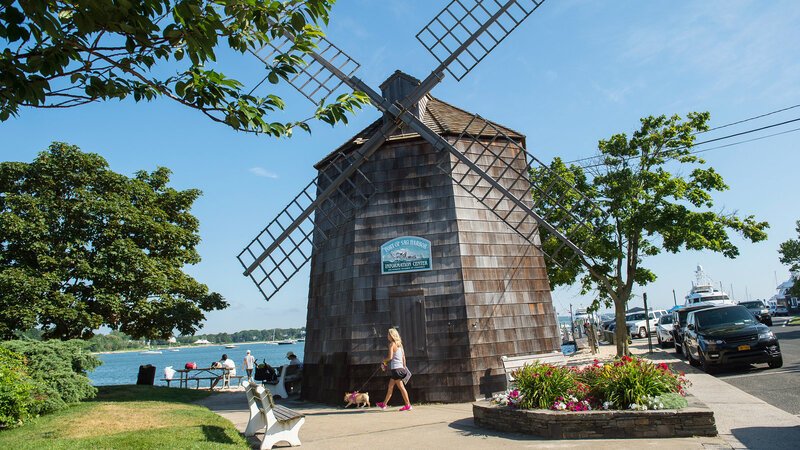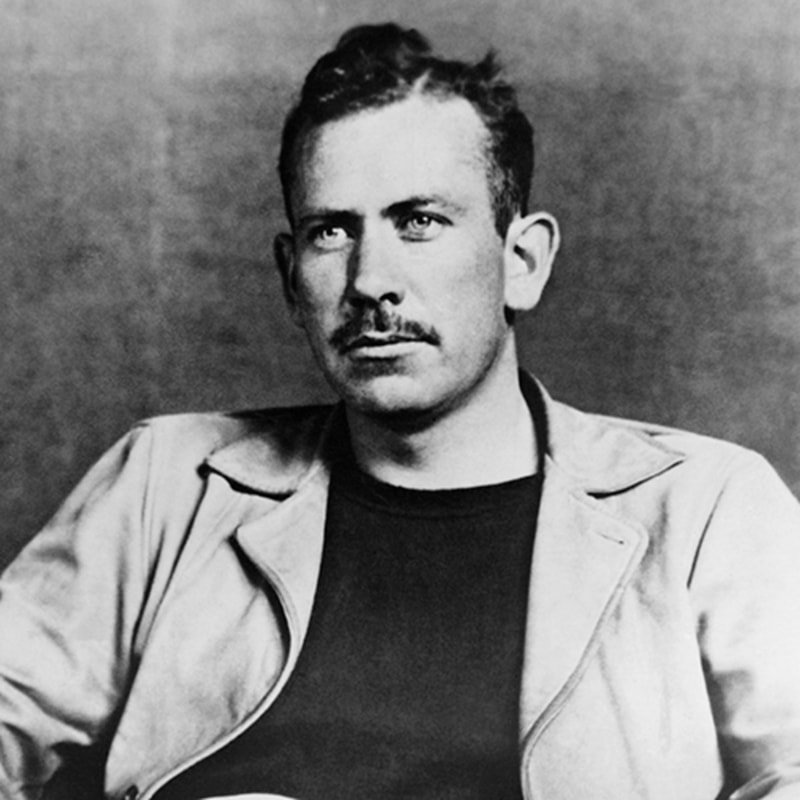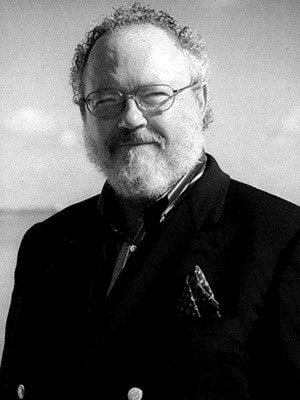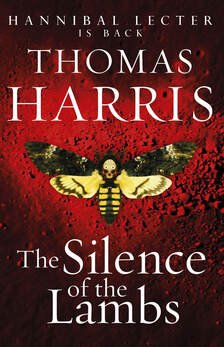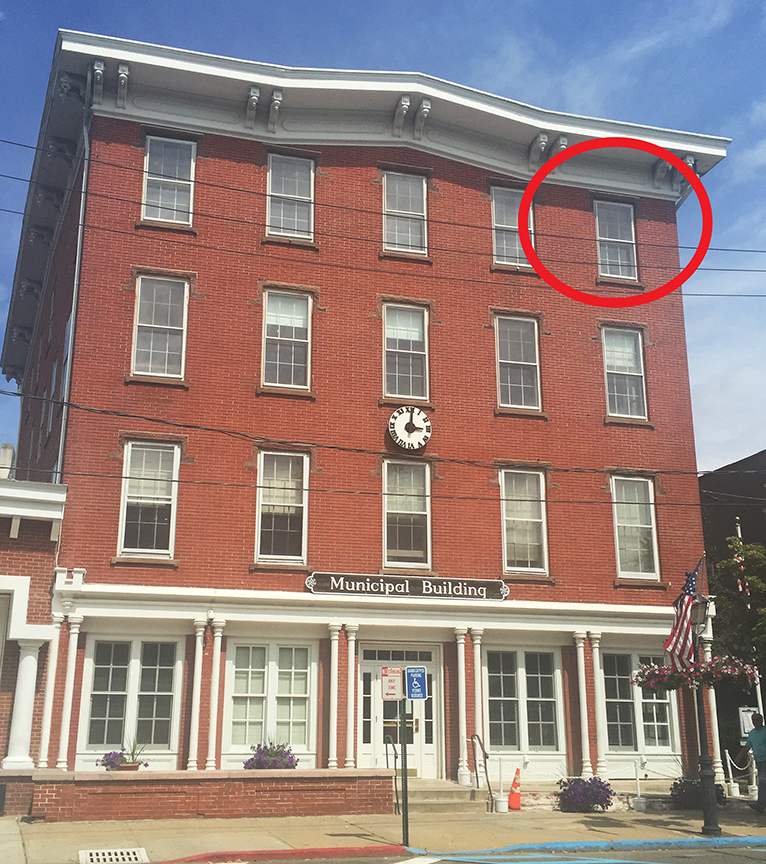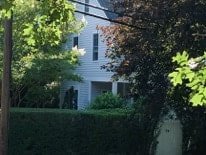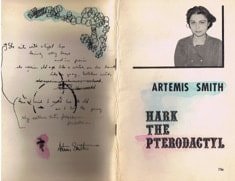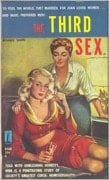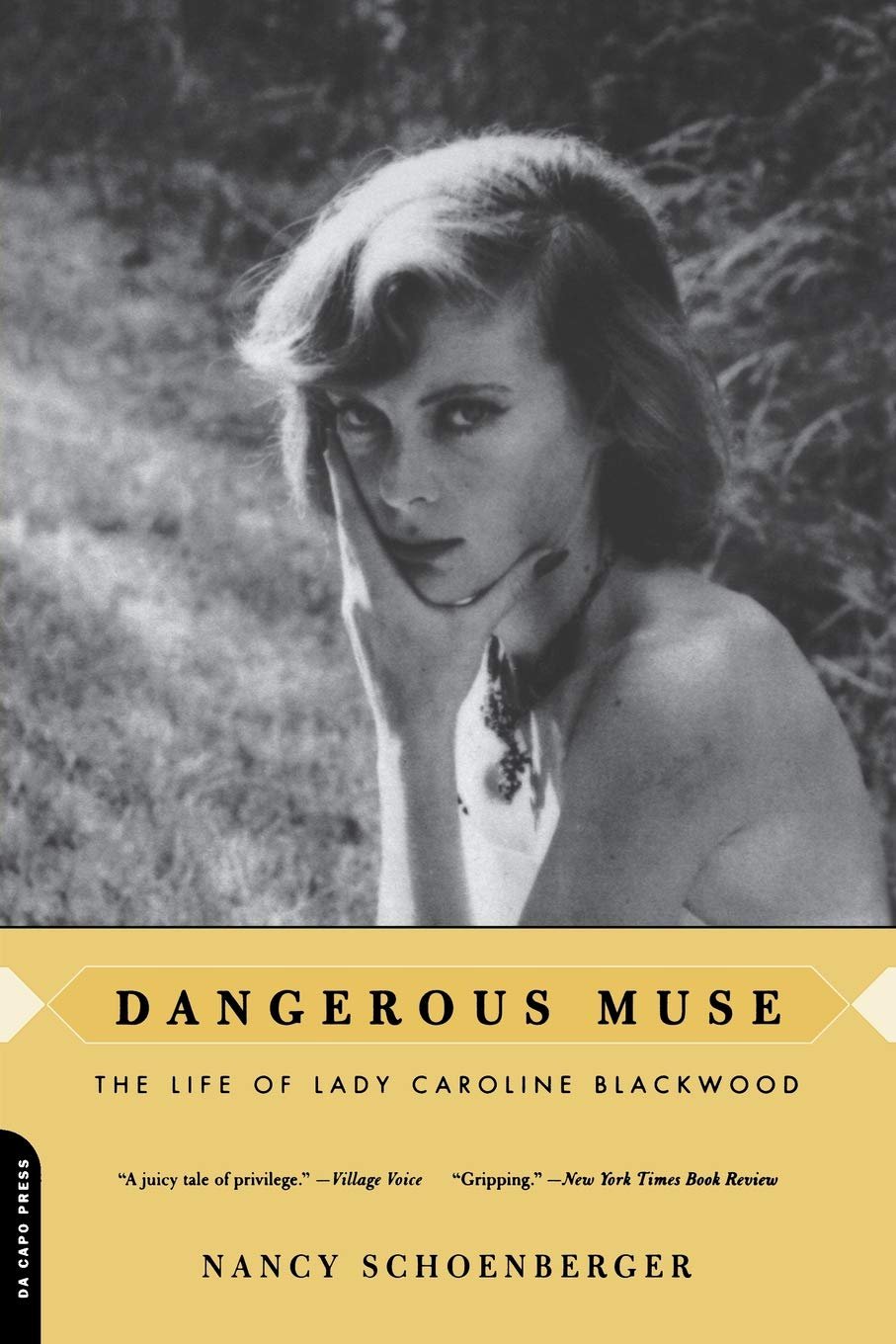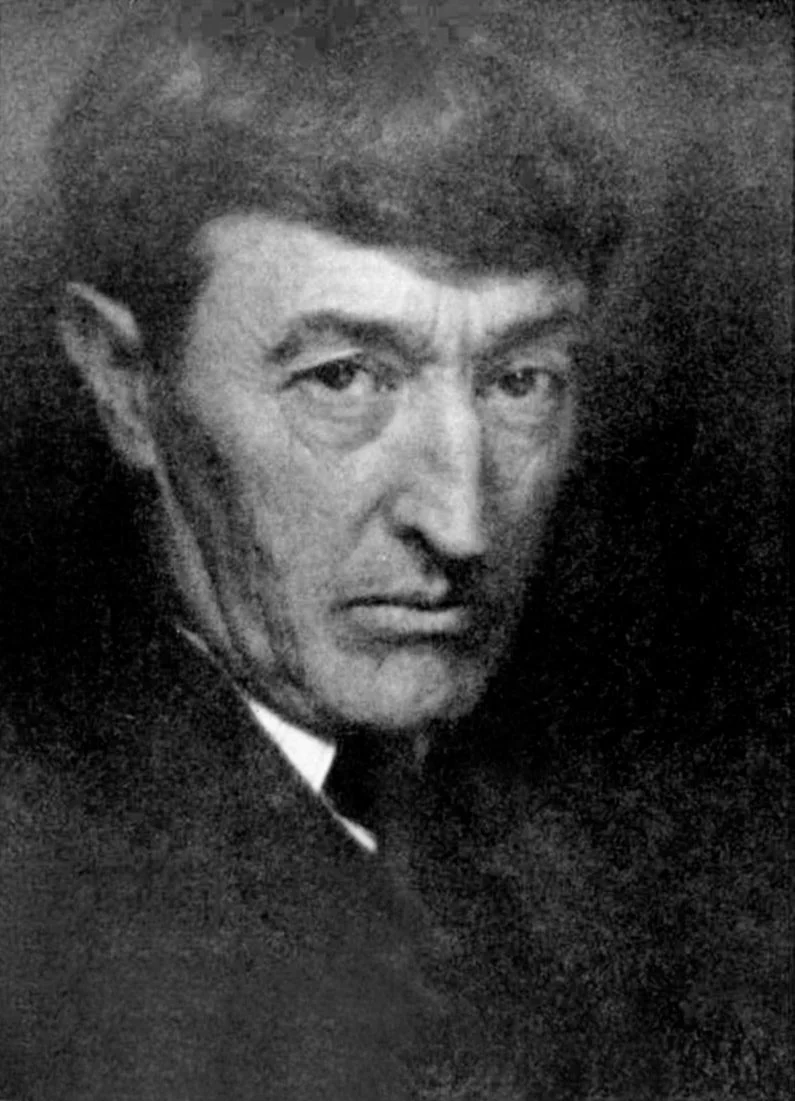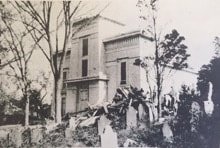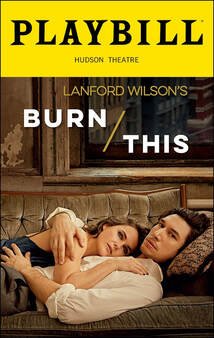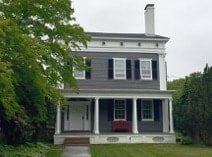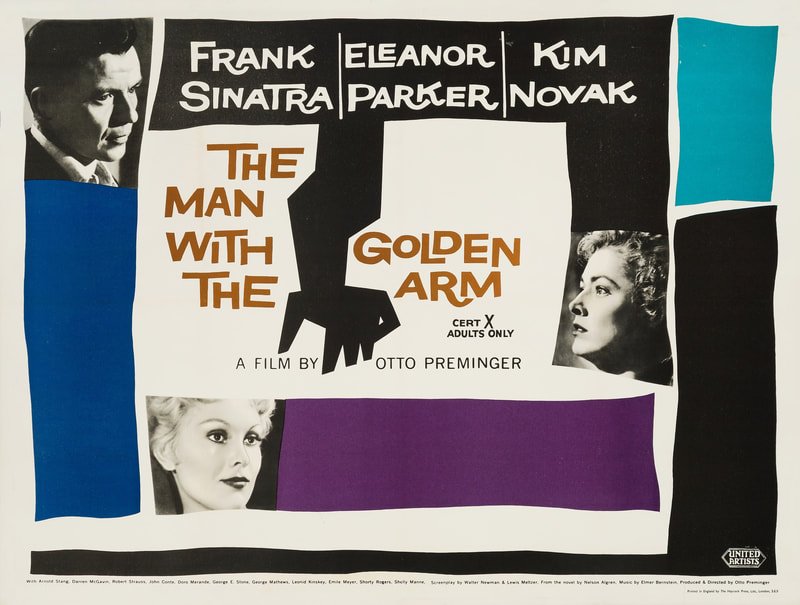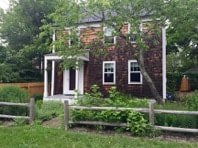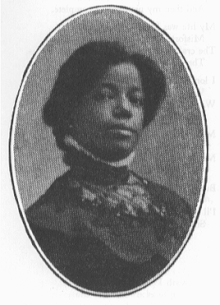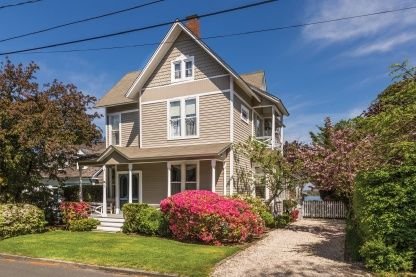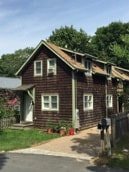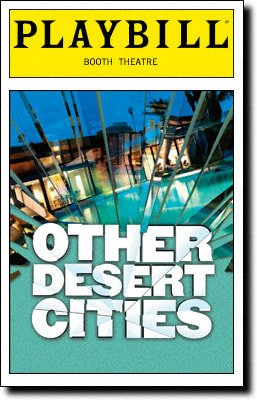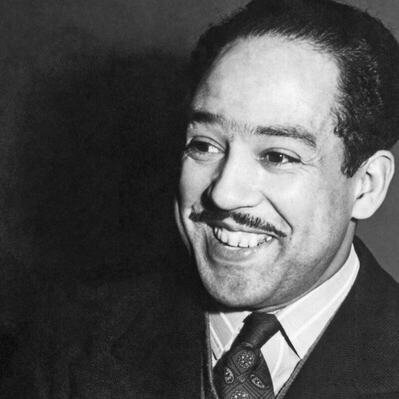LITERARY SAG HARBOR
This tour will take you from Main Street down the west side of the village, and also to the east side, and from the earliest history of Sag Harbor to the present.
Sag Harbor has long been an attractive venue for authors, and is mentioned several times in Herman Melville's Moby Dick, in one instance as a model of depravity, as the "savage" harpooner Queequeg recounts how he decided to stay a pagan after seeing how Christians behaved:
"But, alas! the practices of whale-men soon convinced him that even Christians could be both miserable and wicked; infinitely more so, than all his father's heathens. Arrived at last in old Sag Harbor; and seeing what the sailors did there; and then going on to Nantucket, and seeing how they spent their wages in that place also, poor Queequeg gave it up for lost. Thought he, it's a wicked world in all meridians; I'll die a pagan." (Chapter 12, Moby-Dick, or The Whale)
*Please note: For this necessarily limited tour, an author's inclusion or exclusion was based on: Whether the author were living, due to privacy concerns, unless he or she had moved; notoriety, unless his or her writing had specific cultural/historical significance; and proximity to the general trajectory of the tour. Please look for regularly-scheduled authors’ readings at our two independent booksellers, Canio's Books and Harbor Books, which "bookend"
Sag Harbor Village.
We want to thank Anthony Garro, raconteur, historian and trailblazer, for his kind guidance and inspiration in the formation
of this tour.
WELCOME TO THE TOUR, AND JOHN STEINBECK!
Our first stop will be the Windmill right at the end of Main Street, where you'll see a plaque above the door honoring John Steinbeck.
Windmill at Long Wharf: John Steinbeck (1902-1968) wrote in his gazebo in Joyous Garde, his home at the end of John St (a private and inaccessible residence now).
Steinbeck would come up John St, stopping at the still-extant Cove Deli, at the corner of Glover and Main Streets, chatting with all the locals in Sag Harbor. A man here once asked him, “Aren’t you John Steinbeck?” to which he answered, “I’m John, just call me John”.
He was perfectly at home in Sag Harbor, bringing his dog Charley of his book Travels With Charley into his favorite bar, The Black Buoy, in the middle of Main St (now the home of LT Burger). One of the regulars complained about him bringing Charley into the bar, so a straw poll was taken, and everyone but the complainer voted that Charley could stay. Steinbeck authored 26 other books, including Tortilla Flat, East of Eden, Of Mice and Men, and the Pulitzer Prize-winning The Grapes of Wrath.
The Sag Harbor Windmill
Steinbeck Plaque on Windmill
John Steinbeck
Steinbeck by/courtesy Valerie Suter
Steinbeck & Angel
HANNIBAL LECTER ON MAIN STREET
Hannibal Lecter was “born” above the iconic Marty’s Barber Shop (now Salon 66), introduced in Thomas Harris’s (1940 –) famous novel Red Dragon, to be followed by The Silence of the Lambs. Both books were adapted for the big screen.
Thomas Harris’s first Sag Harbor residence was here, and he has been a part-time village resident ever since.
Thomas Harris
Harris’ Novel 'Red Dragon'
Harris’ Novel 'The Silence of the Lambs'
Marty’s Barber Shop
PRENTICE MULFORD, PHILOSOPHER
"Mansion House Hotel”, 55 Main St: Philosopher and humorist Prentice Mulford (1834-1891) was born in what was then the Mansion House Hotel, now the Municipal Building, (look at the 3rd floor right window), which was owned by his father.
The philosophy he founded, “New Thought" still has a following, and he published a guide to it called “Thoughts Are Things”. Mulford moved to California where he spent several years in mining towns, and became well known as part of the San Franciscan “Bohemians”. He was a prolific writer, editor and lecturer, returning to New York City in 1872.
Mulford was invited to go to England to speak, where he met a young woman who may have been a prostitute. He brought her back to New York City but then found her included in French Postcard photographs (a very mild kind of pornography popular at the turn of the 20th Century) packaged in a packet of cigarettes he purchased. Despondent, he moved to the Seacaucus swamps in New Jersey, lived in rags, & wrote philosophy. Presumably coming back to Sag Harbor to visit his two sisters (who still lived on Madison Street and ran a small school there), he had a stroke and was found dead, floating in his small boat “White Cross” in Sheepshead Bay.
Prentice Mulford
Thoughts Are Things
Mulford’s Birthplace at the Mansion House Hotel on Main Street
SPALDING GRAY
74 Madison Street: Spalding Gray (1941-2004), the writer and monologist, lived at this residence from 1996 until 2001, after which he and his family moved to North Haven.
Spalding Gray was known for the autobiographical monologues that he wrote and performed, principally in New York, in the 1980s and 1990s. He wrote Swimming to Cambodia, which was made into a movie by Jonathan Demme, and two other works were filmed: Monster in a Box (Nick Bloomfield), and Gray’s Anatomy (Steven Soderbergh). Gray helped co-found the experimental theater company The Wooster Group, and was awarded a Guggenheim Fellowship.
His death in 2004 is widely considered to have been a suicide by jumping from the Staten Island Ferry into the East River, and his neurologist, Oliver Sacks, said that he had more than once spoken of what he called a “creative suicide”. A documentary by Steven Soderbergh, And Everything Is Going Fine, compiled of film and video clips of Gray’s early life and career, was released in 2010. Gray, who was deeply enamored of Sag Harbor, is buried in Oakland Cemetery.
Spalding Gray
74 Madison
Gray’s “Swimming to Cambodia” by Jonathan Demme
"COME OUT OF THE CLOSET”
The Morpurgo house at #6 Union St. is now condemned, but it was long the home of the Morpurgo sisters, Annselm and Helga.
Annselm (Annaselma) Morpurgo was born in 1934 in Italy. One grandmother was the Baroness Ida Sierra Morpurgo who spent years in Alexandria, Egypt teaching the harem of King Farouk how to read and write English. Annselm's mother was Lady Adele Vilhelma Ludvikke Larsen-Nilsen, better known as the Scandanavian artist Vilna Jorgen. Her father, Baron Attilio Giacomo Morpurgo, was a physician who prevented a diphtheria epidemic in a fascist youth camp during his military service in the Tyrolean Alps.
Vilna and her husband and two daughters managed to get on a boat to the U.S. in June 1940, the last day before the British barricaded Gibraltar.
Landing in New York, the Morpurgos were hungry, lived in tenements, and suffered the worst privations of poor immigrants, including rat bite fever and pernicious anemia. But after growing up, Annselm, in her family's feminist tradition, coined and stylized the Unisex movement which predated the Rainbow Coalition. By 1953 she and her wife Billie Ann Taulman published the first newsletter of The League, an early gay rights organization.
Annselm and Taulman published “lesbian pulp fiction” under the name Artemis Smith – sexy gender-bending works that stealthily inserted the Rainbow's message to millions of readers worldwide. But it was in 1964, while addressing the East Coast Homophile Organizations Conference in Philadelphia, that she made history forever by urging the gay members of her audience to “come out of the closet or be left out of the civil rights putsch”.
Annselm is also now published as ArtemisSmith. As the head of the Savant Garde Institute in New York, a futurist 'think tank', she writes: "My lifetime goal is still to achieve the Nobel Prize for making a world-shaking contribution to the history of ideas. The central theme to my life's work in literature and philosophy of mind is that Human Identity is not defined/limited by either anatomy or biology, but is evolutionarily transcendent even as our species reaches out and attains higher forms of information processing/exchange.”
Ed. note: Our thanks to Annselm Morpurgo for reviewing this text for inclusion, and to Tom Clavin for introducing us to this history.
Vilna and Annselm §
Morpurgo Family in 1949 §
Hark the Pterodactyl by Artemis Smith
The Third Sex by Artemis Smith
LADY CAROLINE BLACKWOOD
8 Union Street: Caroline Blackwood, (1931-1996), Guiness heiress, novelist, biographer, journalist & critic, had an unhappy, abusive-nanny childhood. She was a plump, awkward teenager who blossomed into a lithe blond woman who wrote with an acerbic wit and tongue. was shortlisted for a Booker Prize, and lived abroad for much of her life.
She eloped to Paris with Lucian Freud, and had, amongst many others, an affair with Robert Silvers, founder of The New York Review of Books, married composer Israel Citkowitz and later poet Robert Lowell. She was even with photographer Walker Evans for a time.
Lowell described his relationship with her as “2 eggs cracking”, and her as a “mermaid who dines upon the bones of her winded lovers”.
A famous painting of her, pictured, by Lucian Freud titled “Girl in Bed” figured in the death of Robert Lowell. Their marriage was a wreck when he left Ireland and flew to New York City, arriving at the apartment building where writer Elizabeth Hardwick, whom he’d left for Caroline, also lived. Hardwick was summoned by the taxi driver, who found Lowell slumped over in the back of his cab. When the door was opened she found Lowell, dead, clutching “Girl in Bed”.
After having lived with Lowell in England, Blackwood moved to Ireland to avoid taxes, and in 1987 settled in the house at 8 Union Street, Sag Harbor, continuing to write until her death from cancer in 1996.
Blackwood by Lucien Freud
8 Union
'The Last of the Duchess' by Caroline Blackwood
'Dangerous Muse' by Nancy Schoenberger
THE KING OF BOHEMIA
Corner Union and Hampton Street: George Sterling (1869-1926), poet laureate of California, once lived where the old Stella Maris school building is now, the next house over being his grandfather’s, whaling captain Wickham Havens, whose house was moved to EH and still exists.
Sterling’s father was Catholic, and Sterling got into all sorts of mischief as a child. His most notorious prank was running a pirate flag up the Old Whaler’s Church's steeple, which was 185 ft. taller than the present church before the hurricane of 1938 knocked it clean off (pictured).
He was eventually sent out to his uncle Frank C. Havens who lived in the Bay Area of San Francisco in 1890. Sterling became a poet there and was friends with Upton Sinclair, Jack London, Ambrose Bierce, Brett Hart, and Mark Twain.
He was nicknamed the “King of Bohemia” by his set, was alcoholic and depressive, and had a failed marriage. One anecdote cites that he was put in charge of the wine for an upcoming party of writers, but drank it all before the party.
Sterling carried around with him a vial of cyanide in a ring, and finally swallowed it, committing suicide in 1926. Sterling was compared to Euripides & Shelley, and his poem "A Wine of Wizardry" was thought to have been "the greatest poem ever written by an American author".
Sterling
Sterling in CA
Old Whaler’s Church
Church After Long Island Express *
LANFORD WILSON
23 Suffolk Street: Home of Lanford Wilson (1937-2011), who was born in Missouri and moved to Greenwich Village in 1962.
A Pulitzer Prize winning playwright and co-founder of Circle Repertory Company, he spent half the year at 12 Suffolk Street since 1970 when he purchased the house, living there full time after 1998. Some of his best-known plays are “5th of July", “Talley’s Folly”, "Balm in Gilead", “The Hot L Baltimore”, and “Burn This”.
In 2010, he was presented the Artistic Achievement Award from the New York Innovative Theatre Awards "in recognition of his brave and unique works that helped establish the Off-Off-Broadway community and propel the independent theatre voice as an important contributor to the American stage.” Wilson was also an avid and impressive gardener.
Lanford Wilson
23 Suffolk St
Burn This on Broadway featuring Adam Driver and Keri Russell
THE JOHN JERMAIN HOUSE – LITERARY WEALTH
221 Main Street, the John Jermain House: John Jermain (1758-1819), for whom the John Jermain Memorial Library is named, showed up as a visitor to the house rather mysteriously after the American Revolution had ended. He joined the Westchester Militia and fought in the American Revolution. It’s thought that his family name was probably Jordan and that his family were Tories, in that he changed it to Jermain. Jermain was a great patriot and also fought in the War of 1812.
Later Lyman Beecher (1775-1863), preacher and father to Harriet Beecher Stowe, was an early resident here. He primarily preached at the East Hampton Presybterian church, but was a guest preacher in Sag Harbor from 1799-1809, staying at the Jermain House while preaching here. Lyman Beecher was a tremendous orator and his published sermons were bought by multitudes. In 1809, Beecher published a sermon delivered before the Presbytery of Long-Island called “The Remedy for Duelling”, to which is annexed the Resolutions and Addresses of the Anti-Duelling Association of New-York. His sermons were virulently anti-Catholic, and he once gave a sermon in Boston that was so inflammatory and anti-Catholic that his congregation rose, left the church, and burned down a nearby nunnery!
Wyndham Lewis (1882-1957), a British artist and writer, lived in the Jermain House from June to October 1940. Lewis was part of a group of artists who founded the Cubist-like movement “Vorticism” (dubbed that by poet and friend Ezra Pound). Vorticism’s literary counterpart was represented by the magazine “BLAST”, and Lewis was its editor. When Lewis stayed here, the Jermain house was owned by literary supporter John Jermain Slocum. Slocum became a leading supporter of several authors, including Henry Miller, Eudora Welty, and Gertrude Stein, and amassed the foremost collection of James Joyce, eventually acquired by Yale University in 1951. Slocum met Lewis when Lewis was down and out. He was described as "broke and toothless", and Slocum kindly lent him $500 and let him stay there.
Kazimierz Wierzynski (1894-1969), poet, and member of the prestigious Polish Academy of Literature and author of an early definitive biography of Chopin, “The Life and Death of Chopin", lived there 1950-1952. He included poems about the United States in a later volume titled “The Bitter Crop”.
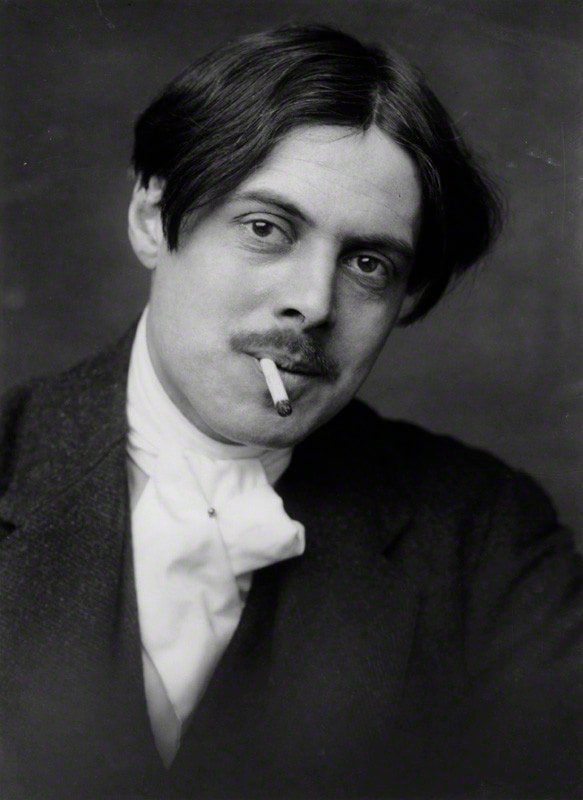
Wyndham Lewis
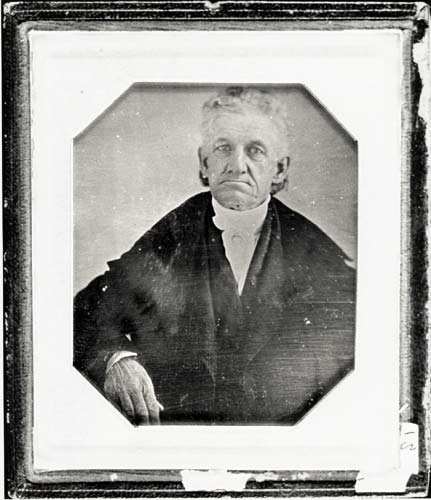
Lyman Beecher

Kazimierz Wierzynski
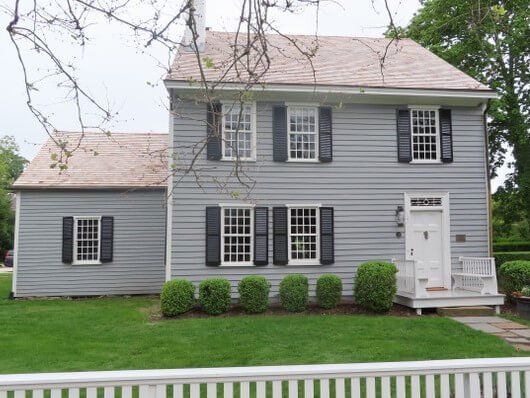
221 Main St

Lewis’ Magazine Blast
THE GOLDEN BOY, JULIAN HAWTHORNE
237 Main Street: Julian Hawthorne (1846-1934), son of Nathaniel Hawthorne, was the golden boy of his family, a handsome man who lit up a room, studied at Harvard and Dresden University (although he never got a degree) and married Minnie Ammilung.
He lived in this handsome house, which had been a whaling Captain's house (note the "porthole" windows on the 2nd floor) in the 1880s and became a very successful, prolific writer, one of his claims to fame being that he was the first American writer able to earn his living from it. He wrote a biography of his parents called “Nathaniel Hawthorne and His Wife”, a significant title because he was adored by his mother. The book became the definitive biography of Nathaniel Hawthorne for years, and remains an important reference work.
Julian Hawthorne's preference was for New York City, and he frequently left Minnie and their eight children to spend time there. In 1913 he was convicted of mail fraud, lending his name to a mining scheme from which he made no profit, and spent a year in jail. In 1915 he left Minnie, without divorcing her, for his secretary & went to CA with her. Minnie died in 1925 and he then married his secretary, remaining in California for the rest of his life.
Julian Hawthorne
237 Main Street
The “Porthole Windows” at 237 Main
BOOKSELLER CANIO PAVONE'S SHOP
290 Main Street: Canio Pavone opened his book store here in 1980 at the same time that Nelson Algren, author of Man With the Golden Arm, moved here.
Algren, a great collector of books, came into the shop and decided that Canio needed more books, so went home and brought him armful after armful of books for the store. Canio’s was the first program on the East End to give writers an opportunity to give readings of their books, which continues to this day under the direction of Kathryn Szoka and Maryann Calendrille, its new owners, now hosting Canio’s Cultural Cafe.
The back part of the building dates from the 1770s, and the front dates from the 1870s. The town’s Episcopal minister lived upstairs in late 1800s. Canio’s was a dry goods store at the turn of the 20th Century, (photo), and serviced the Bulova and other factory workers at the time. Its downstairs was rumored to be a speakeasy, although that hasn’t been proved, but it would have been easy to sail from the harbor to the cove to arrive at the back of the building under cover of darkness to deliver contraband!
Canio’s Books
Old Photo of 290 Main as a Dry Goods Store
Sag Harbor Is, A Literary Celebration
NELSON ALGREN
16 Glover Street: Nelson Algren (1909-1981) lived here the last two years of his life, from 1980-1981. A novelist and short story writer, he was known as the “Poet of the Chicago Slums”. His most famous book was probably The Man With the Golden Arm.
Hemingway called him the greatest post-war novelist writing in his day. He moved here at the end of his life, slightly embittered by his lack of fame. Algren was then accepted into the American Academy of Arts and Letters, and planned to celebrate his induction, but died in the kitchen while preparing for a party.
Algren met Simone de Beauvoir (celebrated author of The Second Sex and writer/philosopher Jean Paul Sartre’s lover) on her first trip to America in 1947, and they carried on a torrid love affair for a few years. In one letter during their transatlantic tour, she wrote " . . . writing to you is like kissing you. It is something physical” while Algren, with typical Chicago realism, replied “No arms are warm when they're on the other side of the ocean." She wrote him 350 letters, and eventually wrote a book chronicling their affair, which broke Algren’s heart, feeling she’d capitalized on their love.
Nelson Algren
Simone de Beauvoir
16 Glover St
Man With the Golden Arm Movie Poster
BETTY FRIEDAN, FEMINIST AND ACTIVIST
31 Glover Street: Betty Friedan (1921-2006) published a book in 1963 that galvanized American Feminism in the second half of the 20th Century. By the year 2000 more than three million copies had been sold, and it had been translated into many languages. The Second Sex, an earlier book by French author Simone de Beauvoir, also dealt with similar issues but did not quite strike the same cultural nerve. The Feminine Mystique exploded the pervasive myth that a woman kept by her husband in a housewifely role is necessarily a fulfilled woman: “The problem that has no name”, as she called it.
For Friedan its publication also let to her co-founding and being the first president of the National Organization for Women in 1966, which sought equal rights as well as standing with men in American society. This was followed by the Women’s Strike for Equality in 1970, which took place on August 26th, the 50th anniversary of the 19th Amendment to the Constitution, giving women the right to vote. It is now hard to believe that less than 100 years ago women needed to be “granted” the right to vote, and Friedan was an important part of this huge change in culture. She also worked hard for the Equal Rights Amendment to the Constitution, and in spite of her influence and hard work, it was never passed. She was slow to accept the cause of homosexual rights, but eventually saw its essential worth.
Friedan was brought up in a liberal Jewish household in Peoria, IL, graduated from Smith College summa cum laude with a major in psychology, and became a journalist, but was ironically and significantly dismissed from the union newspaper UE (United Electrical) News for being pregnant, after which she freelanced. She was temperamental, egotistic, and abrasive, and raised three children with her husband Carl. Her marriage ended in divorce in 1969. Friedan summered in Sag Harbor, spending more and more of her time here later in life at 31 Glover Street. Local historian Anthony Garro, who has guided many walking tours in Sag Harbor, was standing outside her house once with a group. A neighbor suddenly shouted from down the street, “That woman ruined my life!!”, because she had read The Feminine Mystique in the hospital after giving birth, and subsequently left her husband.
There is no question that Friedan’s book and work has had enormous effect on culture worldwide, and its importance is undiminished.
Betty Friedan
'The Feminine Mystique' by Betty Friedan
Dr. Peter Couri Betty Friedan Tribute website, Bradley University
WILLIAM MULVIHILL, AUTHOR AND ENVIRONMENTALIST
53 Glover Street: William Mulvihill (1923-2004) was born in his mother's family home and spent many happy childhood hours here in the McDonough homestead. Mulvihill wrote screenplays, essays, and many novels, most notably The Sands of Kalahari, which he helped turn into a major motion picture in 1965.
Mulvihill had a passion for Africa and visited it several times in the 1960s and ‘70s. He was also a historian and started Brickiln Press, which published his book South Fork Place Names: Some Informal Long Island History in 1995.
He was a dedicated environmentalist, who wanted to see critical groundwater protected and as much habitat preserved as possible. His sister Dolores Zebrowski founded what became the Anna and Daniel Mulvihill Preserve in memory of their parents, and their childhood home at 820 Brickiln Road forms part of the Preserve itself. The Preserve is a prized parcel with hiking trails that are part of the Long Island Trail Lovers Coalition. Mulvihill also saved the adjacent Great Swamp, which was sold posthumously to the Town by his wife, Mary Marceau Mulvihill, and is now named The William Mulvihill Preserve.
Wiliam Mulvihill
53 Glover St
'The Sands of the Kalahari' by William Mulvihill
Anna and Daniel Mulvihill Preserve
JAMES FENIMORE COOPER, FIRST AUTHENTIC AMERICAN AUTHOR
74 Glover Street: Duke Fordham's Inn. The Inn was on the stagecoach route from Fulton Ferry in Brooklyn to Sag Harbor, and was established in 1772, originally at the site now occupied by Muse Restaurant at 16 Main Street (see plaque).
James Fenimore Cooper (1759-1851) was young when he stayed there, and newly married. His family had founded Cooperstown, NY, from where he’d moved. He had a naval background, and bought a whaling ship “The Union” to make his fortune in 1820, at the beginning of the whaling boom. His wife had poor eyesight, and he’d read her English novels. Once, while reading a novel to her, he complained that it was garbage, and she challenged him to write one himself. His first novel, Precaution, was hardly a success, but subsequent works became the first that were truly American novels, with American content.
The protagonist of his novel Natty Bumpo is thought to be based on a Sag Harbor resident, David Hand, whose house is still standing on Church Street, one of the oldest buildings in Sag Harbor. Cooper’s crowning achievement was The Last of the Mohicans.
James Fenimore Cooper
'The Last of the Mohicans' by James Fenimore Cooper
Plaque at Original Location of Inn
OLIVIA WARD BUSH-BANKS
Olivia Ward Bush-Banks (1869-1944) was born on Glover Street near Main (exact address unknown), and moved as an infant with her family to Rhode Island. She returned to our area many times to attend tribal meetings around the turn of the century when Native Americans were vying for civil rights.
Bush-Banks was a dramatist, essayist, editor and poet, and her writing reflects her rich heritage. She published regularly in the journal Colored America, and served as the official historian for the Montauk nation. Her books include Driftwood, and The Trail of Montauk (A Dramatic Sketch of Indian Life). She became an advocate for the “New Negro Movement”, developed her own “Bush-Banks School of Expression”, a nexus for writers, musicians, actors and artists of color, and participated in the Works Progress Administration (WPA) in the 1930s. Her friends included Langston Hughes, Countee Cullen, Paul Robeson, Julia Ward Howe, and W.E.B. DuBois.
Original Poems, published in 1899, was dedicated "with proud reverence and respect" to the African American race. It included only 10 poems, concluding with "Voices":
I stand upon the haunted plain
Of vanished day and year,
And ever o'er its gloomy waste
Some strange, sad voice I hear.
Some voice from out the shadowed Past;
And one I call Regret,
And one I know is Misspent Hours,
Whose memory lingers yet.
Then Failure speaks in bitter tones,
And Grief, with all its woes;
Remorse, whose deep and cruel stings
My painful thoughts disclose.
Thus do these voices speak to me,
And flit like shadows past;My spirit falters in despair,
And tears flow thick and fast.
But when, within the wide domain
Of Future Day and Year
I stand, and o'er its sunlit Plain
A sweeter Voice I hear,
Which bids me leave the darkened Past
And crush its memory,–
I'll listen gladly, and obey
The Voice of Opportunity.
Olivia Ward Bush-Banks
Bush-Banks Meeting with Members of the Montaukett Tribe in 1931
'The Collected Works of Olivia Ward Bush-Banks'
E.L. DOCTOROW
Continuing a short way south on Main Street to John St, you will find the home of Edgar (E.L.) Doctorow (1931–2015). Doctorow was born in the Bronx and named after Edgar Allen Poe by his second-generation Russian Jewish parents. His first wonderful novel, Welcome to Hard Times, was inspired by script reading, a job he took for a motion picture company after his military service ended.
Doctorow then worked as an editor at the New American Library where he worked with Ian Fleming and Ayn Rand, and later at Dial Press (working with James Baldwin, Norman Mailer, and William Kennedy, among others). In 1969 he decided to pursue a writing career full time, and instantly won highest possible praise for his fictionalized account of the Julian and Ethel Rosenberg trial and execution in The Book of Daniel.
He went on to write Ragtime, World’s Fair, Billy Bathgate, and The March, winning countless awards and honors. Many of his novels were made into movies. He taught at Yale, the University of Utah, UC Irvine, and New York University.
Sag Harbor was a fond and largely summertime second home for Edgar and his wife Helen, a novelist and singer, and he played tennis here as well as hosting soirees with her in his beautiful home at 44 John St. His children, Richard and Caroline, are here as well, although the house has been sold.
President Barack Obama called him "one of America's greatest novelists”, and one would be hard put to argue that acknowledgement. He had a puckish and sparkling sense of humor, in addition to the moral weight he lent to his writing and actions in support of ethical behavior and justice.
E.L. Doctorow at Home +
'Ragtime' by E.L. Doctorow
House at 44 John St
WILLIAM WALLACE TOOKER, ALGONKINIST
Heading over to the east side of Sag Harbor, we have:
67 Hampton Street: The house was originally built by Charles T Dering, a wealthy whaling merchant. Later William Wallace Tooker (1847-1917) (Algonkinist) moved there.
Tooker was a pharmacist by trade (the Sag Harbor Pharmacy on Main Street, where he worked, still exists) who collected Algonquin and Shinnecock Native American artifacts since childhood. He became fascinated by the Algonquin language and wrote “Indian Place Names on Long Island”, published in 1911, which helped preserve the origin of names familiar to many on Long Island as well as the Algonquin language itself.
In 1908, with the blessing of Mrs. Russell Sage, a Sag Harbor benefactor, William Wallace Tooker named the largest park in Sag Harbor, located across Otter Pond at the corner of Jermain and Main Streets. Originally called “Sag Harbor, Hampton and Shelter Island Park and Fair Grounds” he renamed it Mashashimuet Park, meaning “Place of the Great Springs” in Algonquin. A fine amateur photographer, the photo collection of Long Island taken by Tooker can be seen at the Tooker Photo Collection archive.
Thanks to Tooker, we have the poem titled Paumanok, the original name of Long Island, become the title of a Walt Whitman poem from Leaves of Grass:
Paumanok
Sea-beauty! stretch’d and basking!
One side thy inland ocean laving, broad,
with copious commerce, steamers, sails,
And one the Atlantic’s wind caressing, fierce or gentle
mighty hulls dark-gliding in the distance.
Isle of sweet brooks of drinking-water — healthy
air and soil!
Isle of the salty shore and breeze and brine!
William Wallace Tooker
'Indian Place-Names on Long Island and Islands Adjacent' by William Wallace Tooker
67 Hampton St
Mashashimuet Park *
NATHAN CUFFEE, EARLY NATIVE AMERICAN AUTHOR
12 Liberty Street: Nathan J Cuffee (1854-1912) was born in East Hampton to whaler Jason James Cuffee, a member of the Eastville Band of the Montaukett tribe and Louisa R. Cotton of the Naragansett tribe from Rhode Island.
Cuffee grew up in the Eastville section of Sag Harbor on Liberty Street, spending time at the house 2 doors down as well, and later moved with his wife Marie to Shelter Island.
While almost blind, Cuffee co-authored a novel with Lydia Jocelyn called Lords of the Soil: A Romance of Indian Life Among Early English Settlers in 1905 which was well-received, making Cuffee the first published Native American from Long Island. (Thanks to the Eastville Community Historical Society for portrait, above, and information).
Nathan Cuffee from a Tintype †
'Lords of the Soil' by Nathan J. Cuffee and Lydia Jocelyn
Nathan Cuffee’s Home at 12 Liberty Street,
JON ROBIN BAITZ, CONTEMPORARY PLAYWRIGHT
59 Hempstead Street: Jon Robin Baitz (1961 –), playwright and occasional actor, lived at 124 Glover with Joe Mantello, Broadway director, for 10 years, after which he moved to 59 Hempstead where he lived for an additional 9 years.
Sag Harbor has hosted some of his most creative endeavors, among which are the Tony-nominated Other Desert Cities and the popular television drama Brothers and Sisters. Baitz’s other notable works include plays The Film Society, Three Hotels, and Substance of Fire, as well as the recent TV series The Slap.
And hats off to longtime resident of Sag Harbor, artist James McMullan and longtime designer of posters for Lincoln Center, whose work for Other Desert Cities is depicted.
Jon Baitz
59 Hempstead
'Other Desert Cities' by Jon Baitz
'Brothers and Sisters' Poster
COLSON WHITEHEAD'S SAG HARBOR
88 Hempstead Street: Colson Whitehead (1969 –): Although he grew up in Manhattan, Whitehead spent summers on Long Island all throughout his childhood, and his book Sag Harbor, a finalist for the PEN/Faulkner award and the Hurston/Wright Legacy Award, reflects his familiarity with the Village and its special character. He is most recently the recipient of the Pulitzer Prize and the National Book Award for Underground Railroad.
His neighborhood was the African-American area of the village that includes three developments: Sag Harbor Hills, Azurest, and Ninevah Beach, now known as SANS. Whitehead summered in the Eastville section of this area. (We thank the Eastville Community Historical Society for their help).
Colson Whitehead
'Sag Harbor' by Colson Whitehead
88 Hempstead
LANGSTON HUGHES
A little further, but worthy of note, we have:
19 Ninevah Place: The poet Langston Hughes (1902-1967) was a guest in William Pickens’ house in the early 1950s. Hughes was a poet, social activist, novelist, playwright and columnist. He as one of the innovators of "jazz poetry", and a leader of the Harlem Renaissance.
Hughes and Pickens were classmates at Lincoln University in PA. Hughes introduced Pickens to Emily Montier Brown, whom he later married. William Pickens III’s family home has hosted Hughes, Paul Robeson Jr, and Lena Horne over the years.
Note: William (Bill) Pickens III, a local activist and historian, has been living in Sag Harbor for over six decades. He traces his local roots to an aunt, an English teacher at Tuskegee Institute, who knew Booker T. Washington and began vacationing in Sag Harbor in 1902. His grandfather, Dr. William Pickens Sr., was one of the first black graduates of Yale Law School. He is a quoted as saying, "Langston Hughes used to come out in the 1950s and stay at my parents’ house, read poems on their porch. He was a college roommate of my father’s and an old pal of my mother’s. He even wrote her a poem back in 1925.”
'The Weary Blues' by Langston Hughes
Langston Hughes

